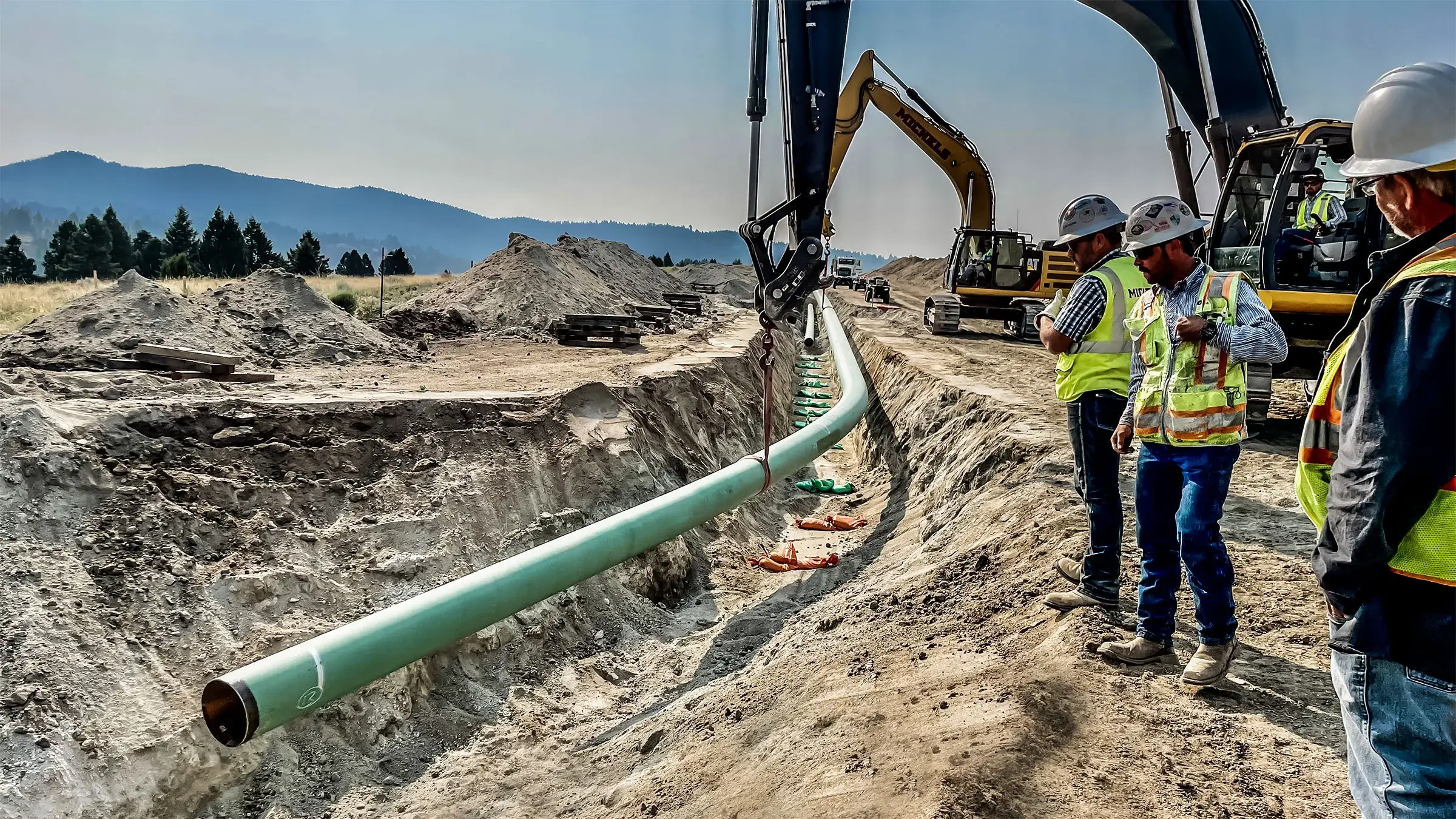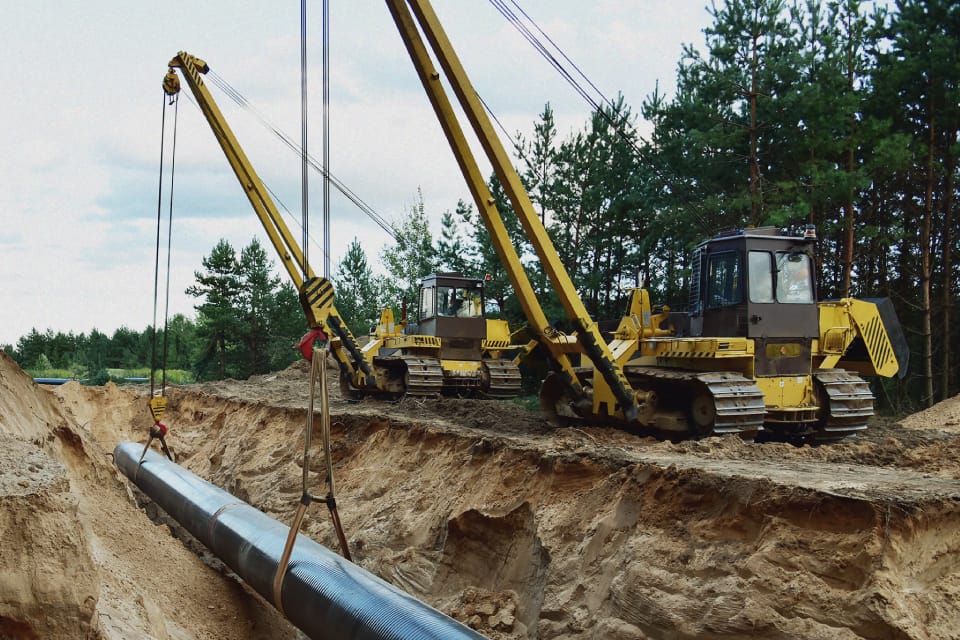Why You Should Consider Underground Work With Creek Pipe trenching services
Wiki Article
Recognizing the Basics of Pipes Installation: What You Need to Learn About the Process
Appropriate pipe installation is important for any type of plumbing system. It requires careful factor to consider of various factors, including product option and adherence to local regulations. A well-planned design can avoid concerns like pressure loss, while the right tools guarantee reliable signing up with techniques. Also experienced installers can make typical mistakes. Understanding these basics can cause a more efficient and long lasting system, motivating a closer check out the crucial elements associated with the procedure.Choosing the Right Products for Pipe Installation
When thinking about pipe installation, the choice of ideal products is vital to making certain sturdiness and capability. Different products are available, each offering distinct benefits and factors to consider. For instance, PVC pipelines are lightweight, immune to corrosion, and affordable, making them excellent for property pipes. On the other hand, copper pipelines, known for their durability and ability to stand up to high temperature levels, are usually favored for heating systems.Additionally, galvanized steel pipes provide strength and sturdiness, appropriate for heavy-duty applications, although they are susceptible to rust over time.For below ground installations, polyethylene pipes are preferred due to their versatility and resistance to stress and anxiety breaking. Appropriate product selection depends on the certain needs of the task, including pressure rankings, temperature level variations, and the chemical nature of the fluids being transported - Creek Pipe roustabout. Ultimately, notified options relating to pipe products add substantially to the total success and longevity of plumbing systemsComprehending Local Building Regulations and Regulations
How can comprehending local building regulations and guidelines impact pipe installation? Familiarity with these codes is crucial for guaranteeing that pipe setups are safe, compliant, and reliable. Local building regulations outline certain demands pertaining to materials, installation techniques, and safety steps, which should be followed in order to stay clear of potential legal concerns and pricey fines.Failure to abide can lead to examinations being stopped working, delays in project conclusion, or also mandated removal of incorrectly mounted pipes. On top of that, understanding zoning regulations and regulations can affect the sort of materials allowed, in addition to the methods made use of for installation.Contractors and homeowners alike ought to invest time in reviewing local policies prior to commencing any kind of installation task. This positive method not only advertises safety but also enhances the general high quality and resilience of the pipes system, ultimately cultivating lasting functionality and contentment.Planning Your Pipe Design and Design
Correct preparation of pipe layout and layout is vital for achieving a reliable pipes system. This procedure begins with reviewing the specific requirements of the room, thinking about the area of components and home appliances. Exact dimensions guarantee that pipes are appropriately directed, minimizing bends and transforms that can lead to pressure loss.Consideration of the circulation prices and the sorts of materials utilized is important, as various materials have varying longevity and compatibility with plumbing systems. Additionally, the designer must represent future expansions or modifications to the format, enabling versatility in situation of renovations.Efficient drainage and ventilation are likewise considerable components of the style, as they prevent blockages and ensure correct waste removal. Ultimately, cooperation with neighborhood building regulations guarantees conformity and safety and security, which is vital in any kind of pipes installation project.Important Devices and Equipment for Installation
Successful pipe installation pivots on having the right tools and devices at hand. Crucial tools consist of pipe cutters for clean cuts, wrenches for tightening fittings, and pliers for clutching and turning pipes. Furthermore, a degree warranties pipelines are set up evenly, while a measuring tape help in accomplishing accurate lengths.For specific products, a soldering iron may be necessary for copper pipes, while a PVC cutter is essential for plastic alternatives. Safety and security devices, such as gloves and safety glasses, secures installers from potential threats during the process.A pipe bender can be specifically beneficial for creating smooth curves without compromising honesty, while a torque wrench warranties that connections are safeguarded to the producer's specifications.Having these tools conveniently available not just promotes a smoother installation process yet also adds to the general sturdiness and functionality of the plumbing system. Appropriate equipment is crucial in accomplishing long-lasting results.Strategies for Correct Pipe Joining and Sealing
Attaining a safe and secure and leak-free link in between pipelines needs mindful focus to joining and sealing methods. Different approaches exist, each matched to various pipe materials and applications (Creek Pipe near me). Welding is commonly used for steel pipelines, ensuring robust connections with warm combination. On the other hand, plastic pipelines profit from solvent concrete or fusion welding, developing solid, irreversible bonds.Threaded links prevail in both steel and plastic piping, needing exact positioning and the use of appropriate sealers, such as Teflon tape or pipe dope, to stop leakages. Compression fittings provide another choice, where mechanical stress protects the pipes with each other, making them quickly disassembled for maintenance.Regardless of the method picked, appropriate preparation is essential. This consists of cleaning pipe ends and ensuring they are devoid of debris. Applying these methods diligently will boost the durability and integrity of the pipe system, eventually contributing to its reliable performanceCommon Blunders to Avoid Throughout Installation
Throughout pipe installation, avoiding usual errors is important for guaranteeing a dependable and efficient system. One constant error is failing to Learn More Here determine and reduce pipelines properly, which can result in inappropriate installations and leaks. In addition, overlooking to examine the compatibility of materials can lead to deterioration or other damages over time. Incorrectly safeguarding joints and connections can likewise develop weak points in the system, triggering prospective failures.Another usual mistake is forgeting the significance of slope and water drainage; pipes should be mounted at the appropriate angle to assist in correct flow. Inadequate support for pipelines can cause drooping and anxiety, impacting the integrity of the system. Ultimately, neglecting regional codes and regulations can lead to expensive rework and safety and security dangers. By knowing these risks, installers can considerably boost the longevity and performance of pipe systems.Maintenance Tips for Resilient Pipe Systems
To guarantee the long life of pipe systems, regular inspections and cleansing are necessary techniques. These actions help recognize prospective issues prior to they intensify right into significant problems. In addition, utilizing proper insulation methods can even more protect pipelines from temperature changes and environmental variables.Routine Evaluations and Cleansing
Routine inspections and cleansing are crucial for keeping the longevity and performance of pipe systems. Regularly checking out pipes for signs of deterioration, leaks, or obstructions can help determine prospective issues prior to they intensify right into pricey fixings. Cleaning pipes regularly eliminates build-up that can limit flow and promote damage. It is a good idea to schedule assessments a minimum of when a year, yet more regular checks might be necessary in high-usage settings. Utilizing specialist solutions for detailed cleansing warranties that all debris is effectively removed. In addition, maintaining documents of evaluations and maintenance activities help in tracking the system's wellness over time - Creek Pipe Company. By focusing on these techniques, homeowner can improve the integrity and life-span of their pipe systemsCorrect Insulation Strategies
Reliable insulation strategies play an essential function in preserving the effectiveness and longevity of pipe systems. Proper insulation decreases warmth loss you could try here in warm water pipes and avoids freezing in cool water pipelines, significantly minimizing energy costs and possible damages. Typical materials made use of for insulation include fiberglass, foam, and rubber, each offering varying degrees of thermal resistance. It is essential to ensure that insulation is applied uniformly, covering all exposed areas without gaps. Additionally, protecting insulation with suitable fasteners helps preserve its position and efficiency over time. Normal inspections should be carried out to determine deterioration, ensuring prompt substitutes. By implementing these techniques, pipe systems can run efficiently and have a prolonged life span, ultimately benefiting both the setting and the property owner.
Regularly Asked Questions
Exactly how Do I Determine the Appropriate Pipe Size for My Task?
Determining the suitable pipe size includes reviewing the job's circulation needs, stress specifications, and the kind of fluid being transferred. Consulting design requirements and carrying out estimations assurances ideal performance and efficiency in the read here installation process.What Are the Environmental Effects of Different Pipe Materials?

Can I Install Pipes Myself or Should I Hire a Specialist?
The inquiry of whether to set up pipes separately or hire a specialist usually relies on the person's skill level and task intricacy. A professional might assure compliance with policies and minimize prospective long-term concerns.
For How Long Can I Anticipate My Pipe Installation to Last?
The durability of pipe installation varies substantially, commonly lasting 20 to 100 years, relying on materials, installation top quality, and upkeep. Regular inspections and correct care can boost longevity and stop premature failings.
What Are the Indicators of a Failing Pipe System?
Indications of a failing pipe system consist of regular leaks, unusual water pressure modifications, stained water, mold and mildew growth, and relentless wetness. Property owners should monitor these indications to prevent costly damage and warranty timely fixings are made.Report this wiki page